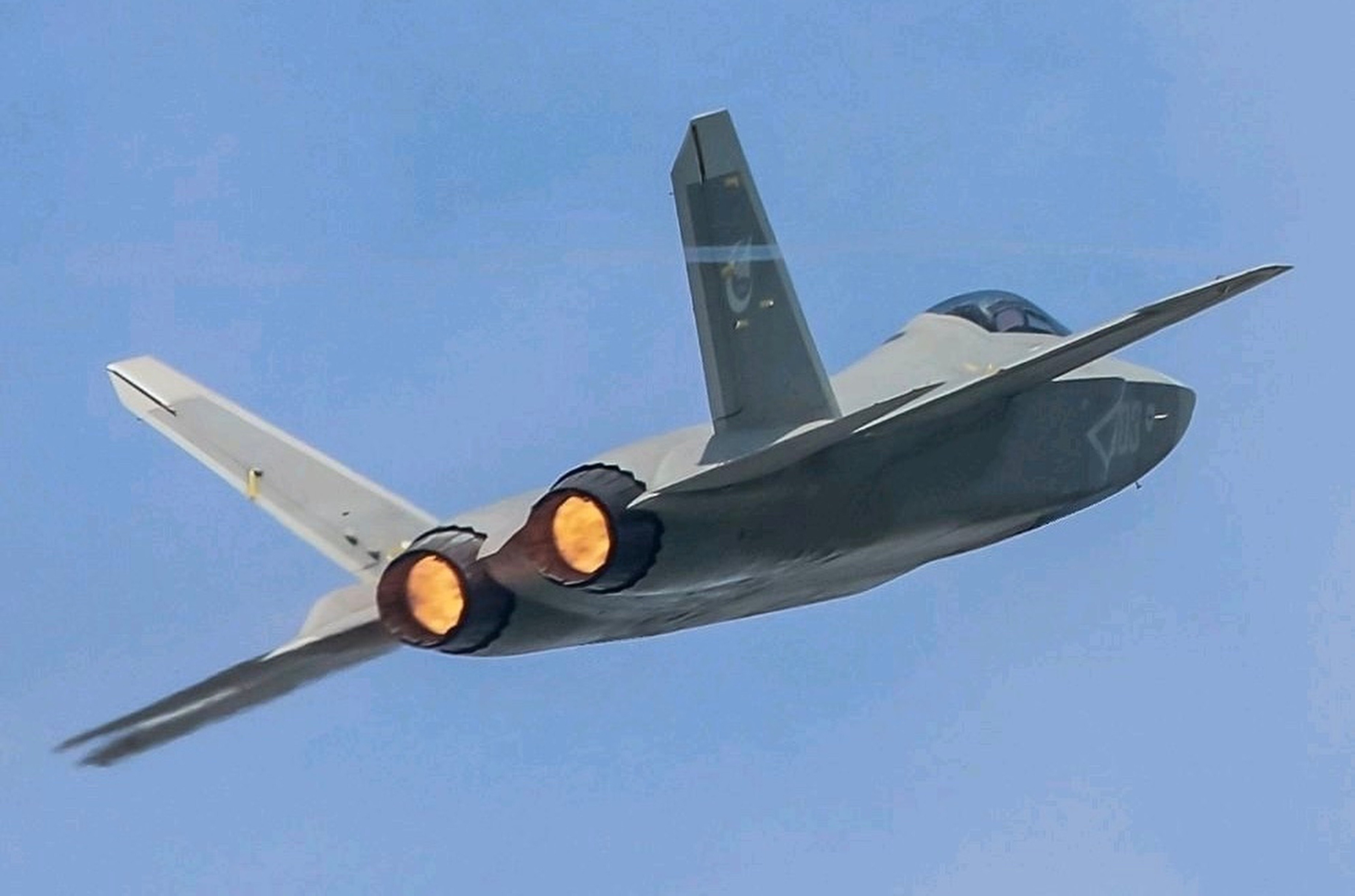However, the F-35, as opposed to the FC-31, has very large tailfins
You what. They're similarly proportioned.
used to generate yaw control and likely high AOA control as well
Vertical stabalizers provides directional control. High AoA performance/control is achieved by high lift devices (leading edge slats/flaps to increase camber, vanes/vortex generators to delay aerodynamic flow separation) and wing/aerofoil design (canards, delta wing, sweepback... etc). TVC gives the ability to instantaneously manipulate a plane's pitch/roll and to a certain extent yaw, they're particularly useful in low speed + high AoA scenarios, however they do not control or manipulate AoA itself.
But my concern is aggressor training, a FC-31 community within the PLAAF basically allows the PLAAF to have a clear notion of what the F-35 is capable of, and moreover, provides a "Panther" paradigm fighter that emphasizes IR and radar stealth in low-speed.
Fifth generation platforms are inherently expensive to operate - the cost per flight hour is double (sometimes even triple) that of a forth generation fighter. As such it doesn't really make much economical sense to create a fifth-generation aggressor unit, all be it would greatly enhance the quality of training for PLA fighter pilots and AEW air controllers. Given finite resources the PLA is inevitability limited to, management of opportunity cost points to the PLA gaining the most utility funding front-line fifth generation units rather than to break up some of those resources to fund an aggressor unit.... Not until economies of scale kick in and we're capable of producing/operating/maintaining fifth-generation fighters at a lower cost. If we looked at what the Americans are doing, their F-22s and F-35s train against aggressor squadrons that fly T-38As that have no stealth capability, radar... Heck these T-38s don't even have a HUD and operate on "steam-gauge" instruments.
Re: Totoro: what the PLAAF really needs is a strike complement for the J-20 right now. This is either going to be the JH-XX or a strike derivative of the J-20. Once you have a strike complement fighter, you can expect the strike capability to be inherited on all new PLAAF 5th gen aircraft going forward, and the raw FC-31 isn't going to meet this requirement.
A dedicated stealth strike fighter would need to have the ability to carry multiple large strike munitions (I'm thinking YJ-12s, CJ-20s, and large precision guided bombs regularly carried by H-6s) in it's internal weapons bay. The FC-31 already features a smaller airframe than the J-20, in fact the J-20 would almost certainly require major airframe modification to create a larger weapons bay to fit these large bombs/missiles. When the current J-20 itself has already been deemed challenging for carrier operations given it's size and weight, a carrier strike variant J-20 would create all sorts of design/performance headaches for CAC to overcome, even with catapult launch to aid takeoff performance.
As far as the credible PLA watching community knows, the JH-XX program has been ditched (or at least placed in the back burner) in favor of the H-20 to serve the PLA's strategic strike/bombing mission. An inherently bigger stealth plane with a large weapons loadout makes much more sense than trying to cram everything into the limited weapons bay of the J-XY or naval J-20. It makes more sense reserving the stealth strike mission (if stealth isn't required, the J-15 has plenty strike capability) to the H-20, a strategic stealth bomber that is designed to have a MUCH larger loadout than any stealth fighter and has a larger combat radius... Whereas on the other hand a naval strike fighter would be limited to the geographical location of the physical carrier itself. If air resistance is expected, H-20s can be escorted by a four-ship formation of stealth J-20s. This a mission set the USAF trains for with their B-2s and F-22s, in fact such air tasking order was deployed in the opening days of Syria, and I believe a similar strategy/doctrine could be adopted into the PLA.
I'm sure if push comes to shove and an immediate strike solution is required out at sea because they can't wait for the H-20 to roll in, the J-XY has the ability to throw stealth out the window and go "beast mode" hanging bombs and missiles on external pylons.
A CG render, but to illustrate my point.
While a single J-XY might just be able to hold a limited amount of missiles/bombs in it's weapons bay in order to maintain stealth, a four-ship formation of J-XYs gives you plenty lethality and striking capability when deployed together. A hypothetical scenario could see a carrier air wing deploy a four-ship formation of J-XYs to provide sweep/escort where they clear up the skies for another four-ship formation of J-XYs to strike ground/sea targets.


